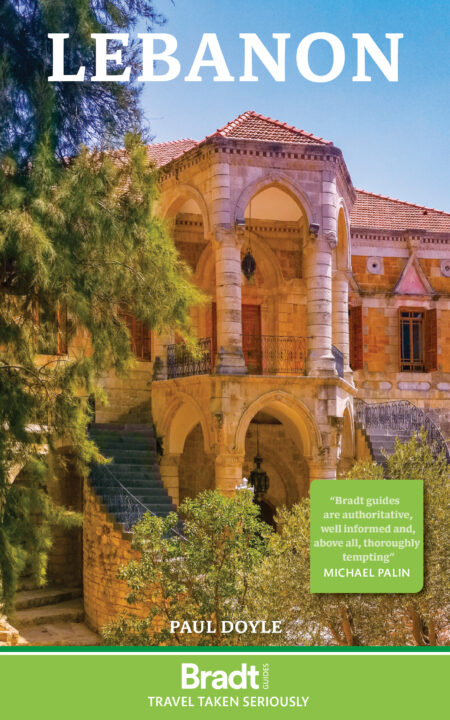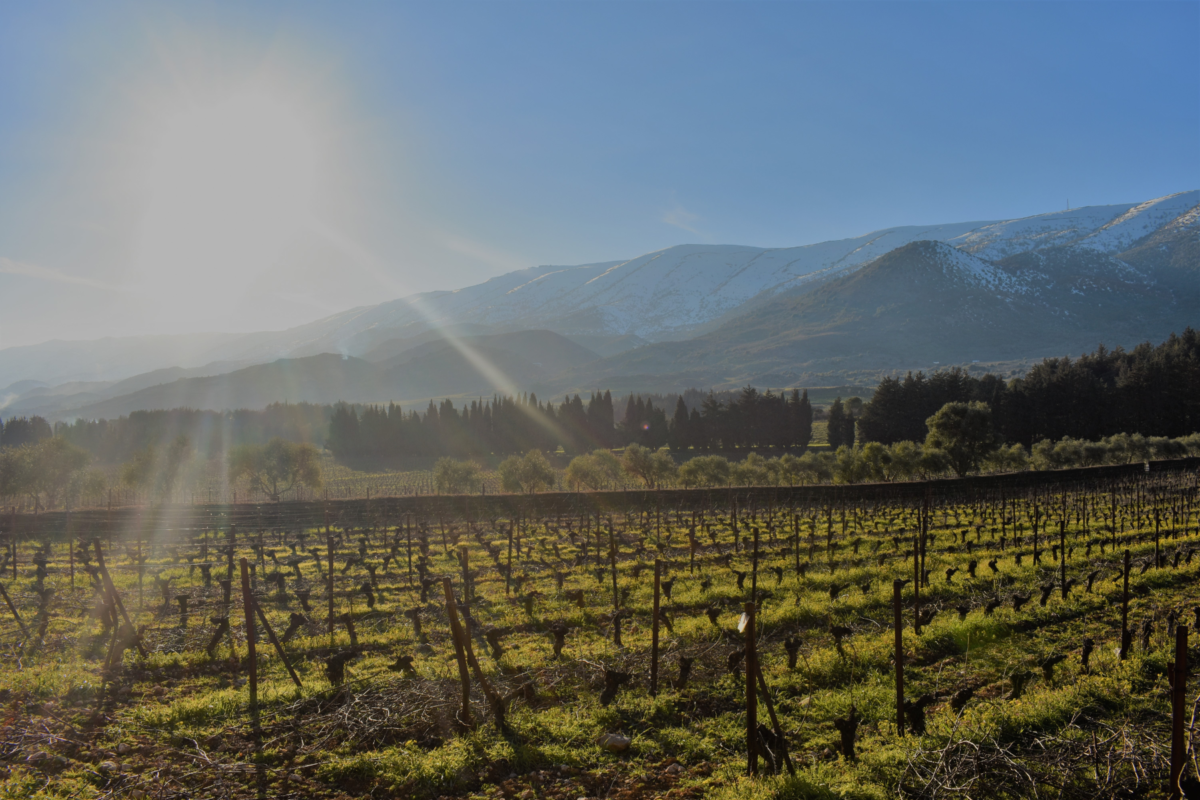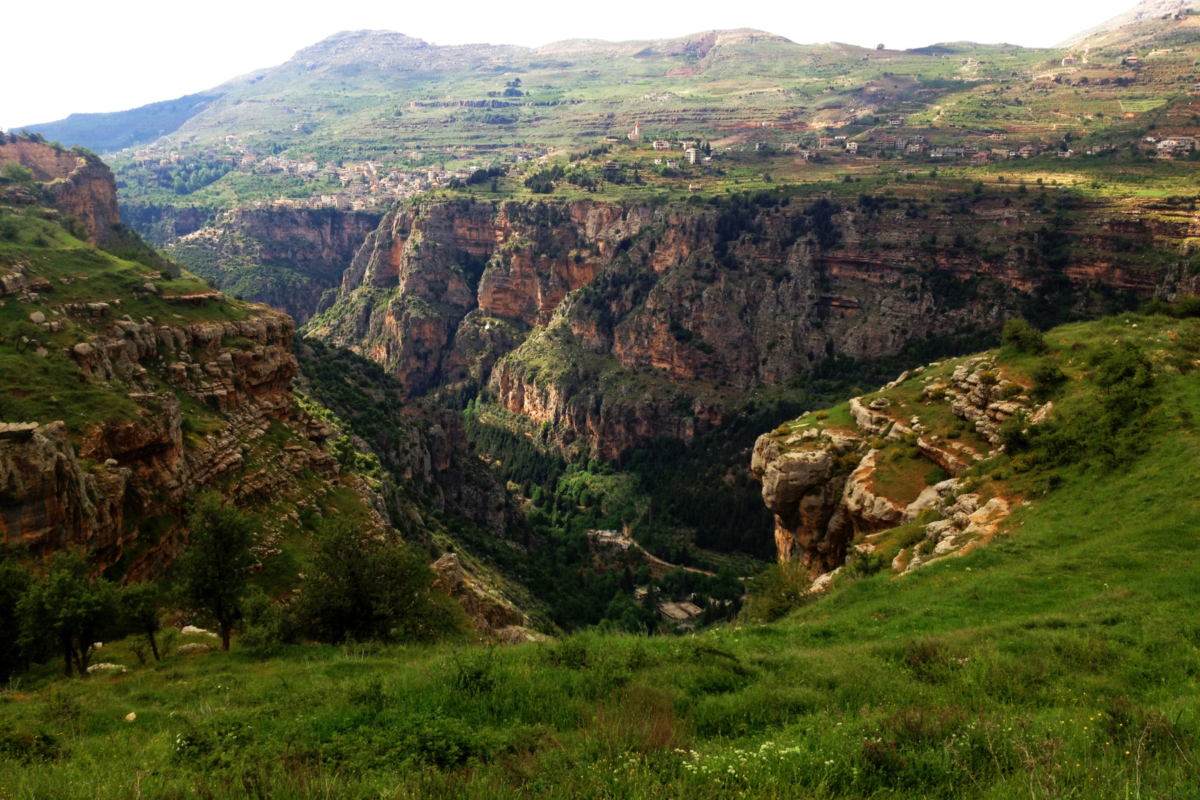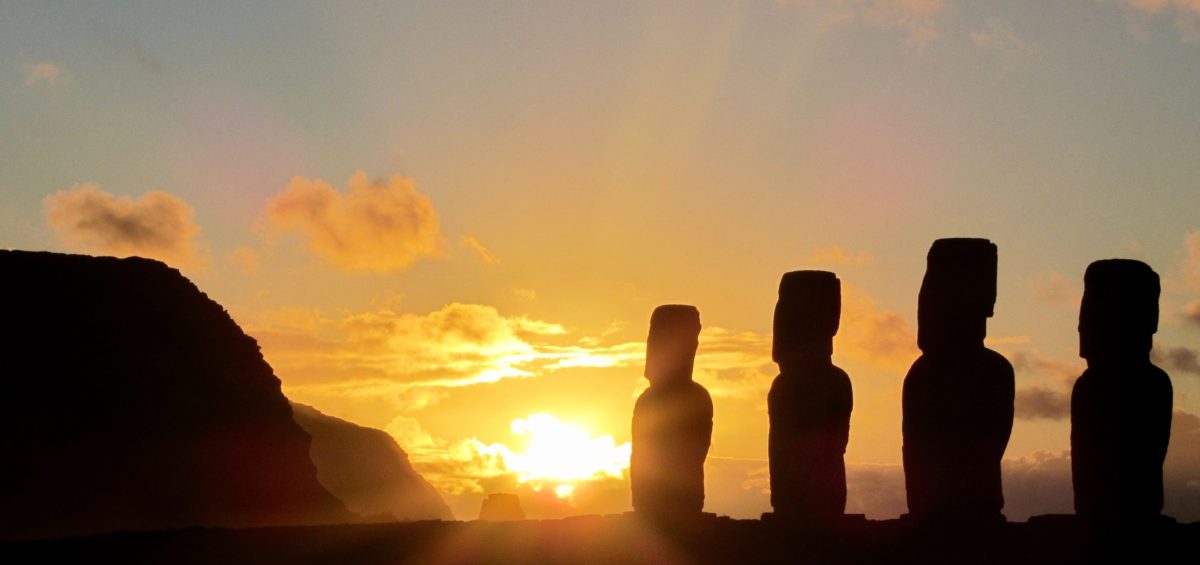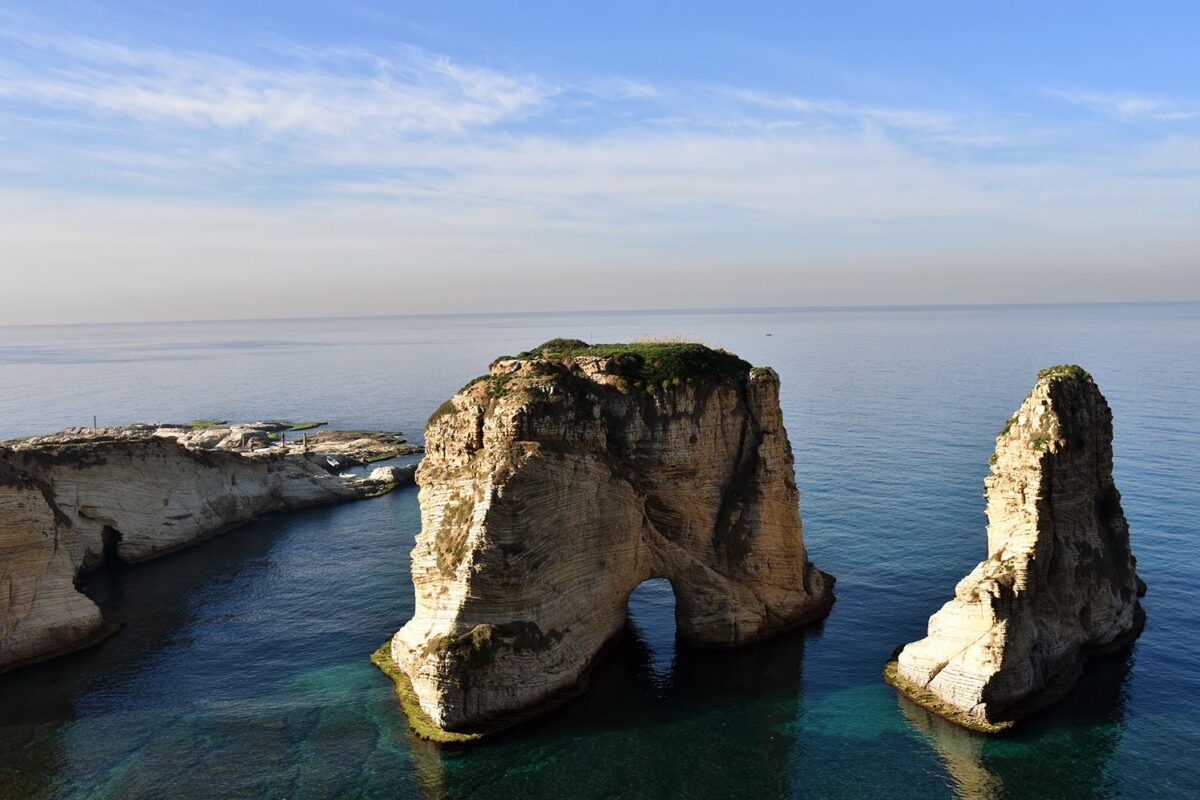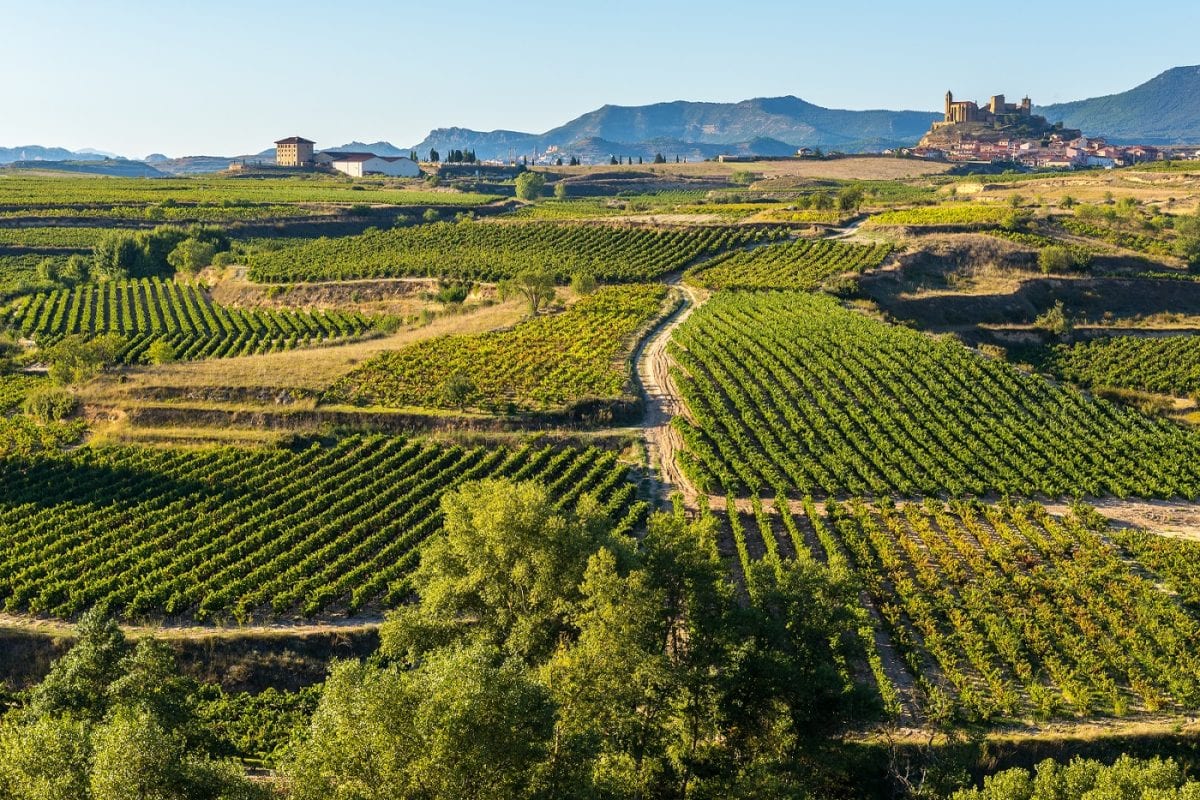If, like me, you prefer to visit less mainstream but totally rewarding destinations, I hope that you leave, like I have, with an enduring fascination and love for the country and the Arab world.
Paul Doyle author of Lebanon: The Bradt Guide
Located at the heart of the Middle East, Lebanon is the Middle East’s most compelling travel destination for a short break or holiday. Shaped by its turbulent past, a holiday to this fascinating country will provide visitors with a plethora of historic sites and cities.
Whilst many base themselves in Beirut to enjoy the city’s heady mix of fine cuisine, non-stop nightlife and abundant artistic and cultural pursuits, visitors should not hesitate to venture outside the capital to experience the equally rewarding diversity that this little country offers.
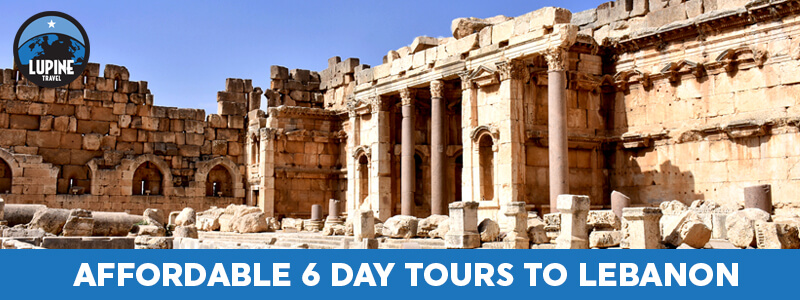
In Sidon a medieval Crusader Sea Castle, Roman temples in Baalbek, and imposing Mamluk architecture in Tripoli provide an insightful trip back in time, whilst the inland trading town of Aanjar showcases graceful architecture from the early Islamic period. Outside the towns, snow-capped mountains and the Qadisha Valley – with its snaking river and waterfalls – entice skiers and hikers; whilst summer on the Mediterranean coast is a magnet for sun-worshippers and watersport enthusiasts.
Hikers and nature buffs will not want to miss a trip to the Chouf Cedar Reserve to see Lebanon’s national symbol, the Cedar tree, whilst the stalactites and stalagmites at Jeita Grotto (a former finalist for one of the New 7 Wonders of Nature) are jaw dropping for both adults and children.
Added to all this, the friendly and hospitable Lebanese people and communities – Christian, Shi’ite, Sunni, Druze, Armenian, etc – with their differing modes of dress, and cultural and architectural footprints, help to ensure that visitors will take lasting memories away from their time in Lebanon.
Lebanon is on our list of 2023 Exceptional Trips! Read the full list here.
Food and drink in Lebanon
Food
Few people depart Lebanon with anything other than positive experiences of Lebanese cuisine. As with many other aspects of Lebanese culture its eating and drinking options are incredibly diverse, mirroring the Arab, Turkish and, more recently, French presence on its shores. When you factor in the country’s own favourable geographic and climatic conditions, which help to nurture a range of tasty and healthy ingredients such as cheese, chicken, fish, lamb, olives, wheat and a host of fresh fruit and vegetables, Lebanon’s gastronomy is quite justifiably renowned throughout the Middle East, and beyond. Like the French, the Lebanese take their food very seriously and lunch or dinner can be a lengthy and sociable occasion. The favourite and main meal of the day is the eclectic mezze, a wide array of up to 40 small savoury dishes, served hot and/or cold.
The most popular meat dishes are chicken and lamb, which often accompany a mezze. The national dish is known as kibbeh, minced lamb and onions fried into conical-shape mortars which are served hot or cold and even raw. A main course may also consist of a fish dish, fried or grilled, with the coastal regions of Byblos and Tyre serving locally caught fresh fish in extremely picturesque settings. Desserts often pander to the Arabic sweet tooth and a popular option is baklava, a very sweet and syrupy pastry with pistachio nuts.
Vegetarians
Following a meat-free diet and lifestyle will in no way preclude you from enjoying the wide range of excellent Lebanese cuisine. The country’s geography and climate, coupled with its agricultural output of an abundance of fruit and vegetables, ensures that vegetarians are well catered for in Lebanon. Many mezze dishes are in any case vegetable based such as hummus, fattoush, moutabel and tabbouleh, the latter being an extremely popular dish, and you will have little problem avoiding meat dishes in most Lebanese restaurants, though restaurants catering solely for vegetarians are not widespread.
Drink
Unlike many of its Muslim neighbours, Lebanon is far from being a ‘dry’ country, with bars, cafés and restaurants serving a wide choice of alcoholic beverages, though in more conservative towns, such as Sidon in the south, the availability of beer, spirits or wine is limited to just one venue at the present time. The national drink is arak, a high-alcohol and potent aniseed-flavoured beverage resembling Greek ouzo or French anise, which is often drunk as an accompaniment to a mezze meal owing in part to its palate-cleansing properties between dishes. Beer is predominantly Almaza, a refreshing local bottled and draught lager, which is available in bars and supermarkets almost everywhere; though brands such as Heineken and Mexican beer and even draught Guinness are also available.
Health and safety in Lebanon
Health
Generally speaking, Lebanon is a healthy country with life expectancy and infant mortality rates much better than other countries in the region, and you are no more likely to fall ill or contract an infectious disease than anywhere else in the Mediterranean region. The standards of healthcare are high with many medical personnel having been educated overseas, many in Europe, and several also speak English and French in addition to their native Arabic. Lebanon currently has some 174 healthcare and medical facilities around the country with around 33 doctors and 34 hospital beds per 10,000 of the population and spends some 7% of its GDP on healthcare; above average figures for the MENA (Middle East and North Africa) region. Emergency and routine medical treatment is available to overseas visitors, but as Lebanon does not have any reciprocal healthcare agreements with either North America or Europe, payment for any medical care received will be required at the time you are treated. It is therefore essential to have comprehensive medical insurance in place prior to visiting Lebanon.
Safety
The words ‘Beirut’ and ‘Lebanon’ continue to resonate with images and reports of danger, terrorism and war nearly three decades after the end of the 1975–90 civil hostilities. Memories still linger in the minds of hostages such as John McCarthy, Terry Waite and a host of other individuals who had their freedom forcibly taken away during a period of utter chaos and hatred in Lebanon’s history. Thankfully, these events are in the past and, although it cannot be said that the country’s internal problems and wider Middle East peace issues have been completely solved, the fact remains that foreign tourists and visitors are not targets for abductions or violence.
Until the situation in Syria stabilises, when in Lebanon stay abreast of current developments by checking the daily press, or tuning into local radio stations and/or the BBC news website. But perhaps just as valuable is to get advice and information from local people. As regards crime against the person, Lebanon is probably one of the safest countries in the world, with a very low crime rate compared with countries such as the UK and USA. There have been reports in the past of occasional bagsnatching and a spate of robberies in shared (servees) taxis in Beirut, but these are rare exceptions and Lebanon remains an inherently safe country for visitors. Like anywhere in the world, however, it pays to be vigilant.
Female travellers
Whether travelling solo or as part of a group tour, female travellers will find Lebanon a breath of fresh air compared with some other Arab countries where women are often given less-than-fair treatment. In a country justly famed for its cosmopolitanism and hospitality and an extremely low crime rate against the person compared with many Western countries, female travellers constantly state that they have encountered an easy-going and safe place to visit without the constant pestering and hassles that they have experienced in countries like Morocco.
In terms of dress, pretty much anything goes in Beirut, and at times, with the revealing and fashionable clothing worn by many young women, you would hardly know you are in an Arabic country. That said, a short, skimpy top or skirt would be totally inappropriate attire in a mosque or in more conservative towns such as Baalbek, Sidon or Tripoli, though even here you can still see fashion-conscious and sexily dressed local women. If using taxis, it is probably a good idea where possible to sit in the back of the car in order to avoid potentially giving the wrong impression.
Though Lebanon has a certain machismo, bars are by no means a male domain and as a lone woman you should not expect any more unsolicited attention than you would get back in your own country. With a vibrant café culture in the capital, you often see many lone Lebanese females passing time over a beer or cappuccino in a relaxed manner, usually accompanied only by an iPhone, laptop or both.
LGBTQ+ travellers
Lebanon’s culture of openness and tolerance doesn’t generally extend to the gay community, with attitudes to homosexuality still lagging some way behind those in many Western countries. As is the case in Islam generally, homosexuality is illegal under Lebanese law with Article 534 of the Lebanese Penal Code stating that homosexuality is a sexual act ‘contradicting the laws of nature’; and the country does not have an overtly ‘gay scene’ where ‘outed’ homosexuals can freely mingle.
Public displays of affection are taboo, and could cost you your liberty, with up to one year in prison, though in practice as a visitor you are more likely to be subject to deportation and/or a fine.
There are, however, some recent positive signs of change including a more enlightened and supportive media, together with the groundbreaking statement from the Lebanese Psychiatric Society in July 2013 who declared that same-sex relationships are not a form of mental illness and require no therapeutic input, making Lebanon the first Arab country to announce that homosexuality is not a disease. However, whilst there are a number of what might be termed ‘gay-friendly’ establishments in Beirut, discretion remains for the foreseeable future.
Travel and visas in Lebanon
Visas
Arriving by air
Citizens of all countries require a visa to enter Lebanon. Nationals of Bahrain, Kuwait, Oman, Qatar, Saudi Arabia and the United Arab Emirates (Gulf Co-operation Council States) and Jordan are issued with a three-month visa, free of charge, upon arrival at Beirut international airport. Nationals of the following countries are currently issued with a free, single-entry, one-month visa, upon arrival at Beirut international airport which is renewable for up to three months, upon production of a valid passport valid for at least six months: Andorra, Antigua and Barbuda, Argentina, Armenia, Australia, Austria, Azerbaijan, Bahamas, Barbados, Belarus, Belgium, Belize, Bhutan, Brazil, Bulgaria, Canada, Chile, China, Czech Republic, Costa Rica, Croatia, Cyprus, Denmark, Dominican Republic, Estonia, Finland, France, Great Britain, Georgia, Germany, Greece, Hong Kong, Hungary, Iceland, Ireland, Italy, Japan, Kazakhstan, Kyrgyzstan, Latvia, Lithuania, Liechtenstein, Luxembourg, Macedonia, Macau, Malaysia, Malta, Mexico, Moldova, Monaco, Montenegro, Netherlands, New Zealand, Norway, Palau, Panama, Peru, Poland, Portugal, Russia, Romania, Saint Kitts and Nevis, Samoa, San Marino,Serbia, Singapore, Slovakia, Slovenia, South Korea, Spain, Sweden, Switzerland, Tajikistan, Turkmenistan, Ukraine, USA, Uzbekistan, Venezuela.
It is also possible to obtain a Lebanese visa in advance of travel from the Lebanese embassy or consulate in your own country. It is essential to note, however, that if your passport contains evidence of a visit to Israel (including entry/ exit stamps from the land border crossings between Egypt and Israel or Jordan and Israel), permission to enter Lebanon will be refused. The information in this section can change at any time and it is a good idea to check with the Lebanese embassy or consulate in your own country for the most up-to-date regulations prior to finalising your travel arrangements. The General Directorate of General Security in Lebanon has comprehensive visa information and regulations pertaining to citizens of most countries in Arabic, English and French. In the UK, the Foreign and Commonwealth Office (FCO) is an especially good source of ever-changing countryspecific officialdom and timely security information. In the USA, the Department of State contains country-specific information and travel advice for US citizens. For Australian citizens visiting Lebanon, the government website of the Department of Foreign Affairs and Trade should be consulted for a range of entry, visa and security information for Lebanon.
Arriving by road
As it is not possible to enter Lebanon from the country’s southern border with Israel, your only option to enter Lebanon by land is from its northeastern neighbour, Syria. At the time of writing, the ongoing hostilities in that country makes travel between the two countries a potentially very dangerous undertaking and cannot be recommended.
Getting there and away
By air
Lebanon’s sole commercial international airport is Beirut’s Rafiq Hariri International Airport, which is served by many of the world’s major international airlines; and this is the way the vast majority of visitors will arrive.
From the UK there are daily non-stop flights departing from London Heathrow airport and the flying time is a little under 5 hours. Lebanon’s national carrier Middle East Airlines (ME) flies from Terminal 3, whilst the UK’s British Airways uses Terminal 5. From London Gatwick airport and London Stansted airport the Turkish budget carrier Pegasus Airlines flies daily to Beirut via Istanbul.
From continental Europe, Beirut is a little over 4 hours from Paris and Spain, a little under 4 hours from Frankfurt, and around 3 hours from Rome.
There are currently no direct flights to Lebanon from North America which means that for US and Canadian citizens a stopover in one of the main European capitals such as London, Paris or Rome will be required in order to complete your onward journey via a connecting flight.
For travellers visiting Lebanon from Australia, Emirates and Etihad Airways both fly regularly from Brisbane, Sydney and Melbourne to Beirut via their national hubs at Dubai and Abu Dhabi respectively. As there are also no direct flights at present to Beirut from New Zealand, visitors will need to pick up a connecting flight from Australia, fly via a European destination such as Paris or London, or arrive in a nearby city such as Amman (Jordan), Cairo (Egypt) or Istanbul (Turkey) to pick up a connecting flight to Beirut.
By road
After flying, overland travel is the most popular and accessible way for visitors to arrive in Lebanon. Although Lebanon shares an 81km land border with its southern neighbour, Israel, the two countries remain in a state of war and, despite the Israelis withdrawing the majority of their military presence from Lebanese soil in May 2000, it is still not possible to enter Lebanon from Israel, a state of affairs highly unlikely to change any time soon. The result is that entry to Lebanon by road is only possible via its northeastern neighbour, Syria, from one of Lebanon’s four main border crossing points. At the time of research, bus and taxi travel between Lebanon and many towns and cities in Syria was possible but it cannot be recommended until the cessation of the ongoing hostilities in that country.
By sea
Lebanon’s principal ports of entry for commercial sea-going traffic are Beirut and Tripoli, but the country is not overly well served by boat. Nevertheless, there are a few possible options if you would like to visit part of the country this way, perhaps combining Lebanon with other countries in the region; but choices are fairly limited at present.
Getting around
Lebanon is a very small nation and its c7,000km of paved roads, though oft en pot-holed and narrow with hairpin mountain bends, are going to be your principal means of travelling around the country by whatever mode of transport you choose. Officially, driving is on the right-hand side of the road, though this can change at any time depending on the whim of the driver. Traffic lights, signs and speed-restricted areas have increased in recent years, but often have the status of ornamental features rather than any real practical value given the often appalling standards of driving amongst many Lebanese who more oft en than not fl out the ‘rules’ of the road. Traffic conditions, especially in Beirut, are also overwhelmingly characterised by congestion and chaos, not to mention the environmental impact of not so environmentally friendly cars, which account for around 40% of CO2 emissions in the capital. That said, public transport is plentiful and cheap in most areas of the country and you will not have to wait long to depart to your chosen destination.
What to see and do in Lebanon
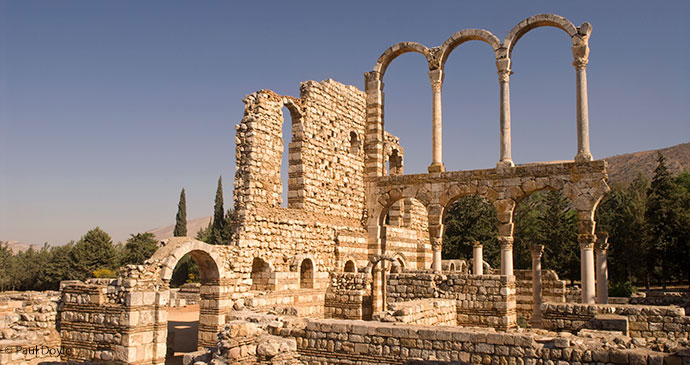
Aanjar
With an area of only some 20km2, Aanjar is more a village than a town. Around 58km from Beirut and close to the Syrian border, the area takes its name from a large spring, Ain Gerrha, a few kilometres northeast of Aanjar’s main archaeological site. It is also often referred to locally as Haouch Moussa or Moses’ Farm. It has a small, almost exclusively Armenian, population numbering around 2,500 and was settled by those fleeing the 1915 genocide in Turkey, and their descendants.
Today the town evokes a splendid aura of peace and tranquillity, set in very picturesque surroundings against the snowy backdrop of the Anti-Lebanon Mountains, and offers some fine waterside dining of mezze, Armenian food and the local speciality, farmed trout, at many of its restaurants. But the main draw of Aanjar is its much earlier historical settlement built during the Umayyad period, which has left a beautiful and unique architectural legacy from the earliest years of Islamic rule.
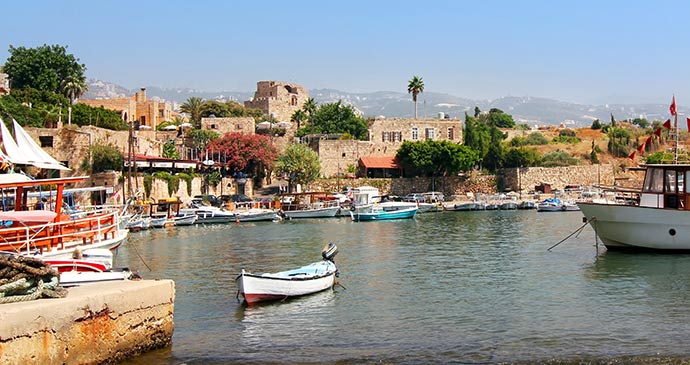
Byblos
As the saying often goes, the more things change, the more they stay the same. This certainly applies to Byblos (Jbail in Arabic), where, despite its 7,000 years of existence, making it a contender for the oldest continuously inhabited town in the world, it continues to evoke the past as much as the present.
As a nation founded by its port cities and settlements, Byblos must rank as Lebanon’s finest. Charming and picturesque by day and night, the port is the quintessential picture-postcard scene. It would be a great shame to visit the country without stopping by here to see the still-functioning workaday harbour and the tastefully restored souk (easily better than Beirut’s), offering some of the most unusual and best souvenir items in the country. Byblos is dotted with fine seafood restaurants, including the Fishing Club (Pepe’s), which has a splendid location by the port and offers a museum of photographs dedicated to the rich and famous who indulged their heady passions by day and night during the 1960s and 70s.
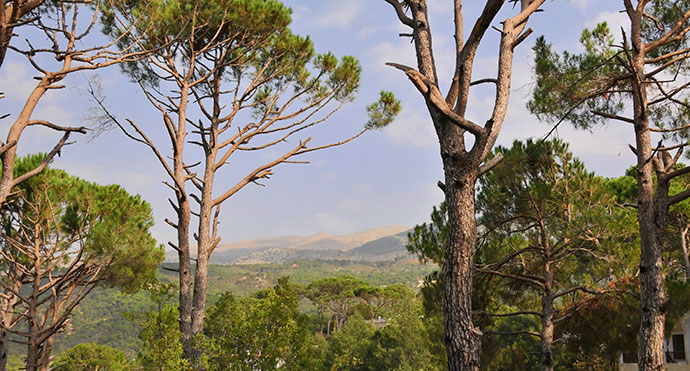
Chouf Mountains
Although only an hour or so away from the capital, the Chouf Mountains maintain a distinct geographical, cultural and ethnic identity quite unlike any other in the country. Its lush green vegetation, undulating terrain and cultivated fields of apples, grapes and olives is dotted with numerous picturesque towns and villages, making the Chouf one of the most scenic places in Lebanon. This is also the heartland of both the Maronite Christian and Druze communities; breakaway religious groups who have long made the area their home, fleeing persecution and sectarian rivalry. They have held steadfast to their traditions and it is here, especially in the towns of Baakline and Moukhtara, that you will see the eccentric moustaches, white skullcaps and baggy sherwal trousers worn by Druze men, and the white veil worn by women.
Visitors to the area will be most struck by the well-preserved Ottoman-era architecture in the peaceful town of Deir al-Qamar with many examples from the reign of Fakhreddine Maan II, whilst the opulent Beiteddine Palace, the legacy of the emir Bashir Shihab II, also houses a remarkable collection of Byzantine-era mosaics. For outdoor and nature lovers, too, the Chouf makes a welcome respite from the hustle and bustle of Beirut and in addition to its many hiking and trekking possibilities is home to the Chouf Cedar Reserve, Lebanon’s largest nature reserve containing a quarter of the country’s cedar trees, as well as a wide range of other flora and fauna.
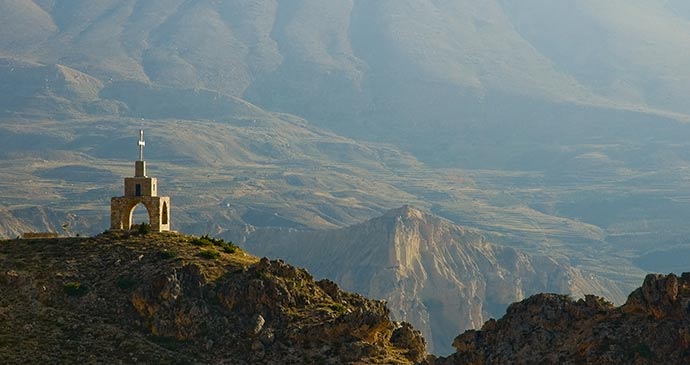
Qadisha Valley
This elongated steep-sided gorge extending for approximately 50km from Koura east of Batroun in the west to the town of Bcharré and the Cedars in the east possesses arguably the most spectacular scenery in the country. Unlike at many of Lebanon’s natural and manmade attractions, the Qadisha Valley offers little in the way of concessions to tourists. Raw, rugged and wild, with often treacherous and steep mountain passes dotted with waterfalls, the valley is a scenic place to visit at any time. In spring, Lebanon’s varied and colourful flora like buttercups and poppies carpet the landscape with the melting snow drizzling down the mountain forming an extremely picturesque backdrop.
When UNESCO incorporated the valley into its World Heritage site listing in 1998, it did so with the comment that Qadisha is one of the most important early Christian monastic settlements in the world’. The head of the valley is dominated by the picturesque town of Bcharré, which, with the Cedars close by, makes a logical and ideal choice for a base from which to explore the valley below.
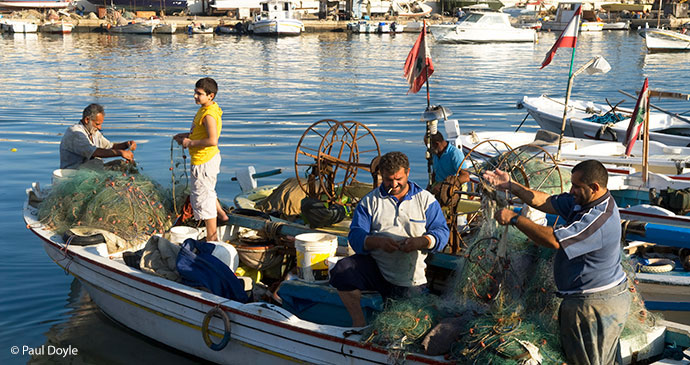
Sidon
Lebanon’s third-largest city after Beirut and Tripoli and the largest town in the south, is the old Phoenician port city of Sidon. As a conservative, predominantly Sunni Muslim town, surrounded by banana and citrus groves, it evokes a much more traditional and relaxed way of life compared with the capital, lacking the frenetic construction and nightlife of Beirut.
But while Sidon may lack the eclectic entertainment and nightlife of the capital, it more than makes up for this in being a largely authentic and traditional Arab city with anachronistic souks and artisans plying their trade like they have done for centuries. A famous sea castle, khans, a couple of excellent museums and a busy, picturesque fishing port make Sidon a very pleasant place for a day or two, and it is a good base for an extended stay if you are intending to make a comprehensive tour of the south.
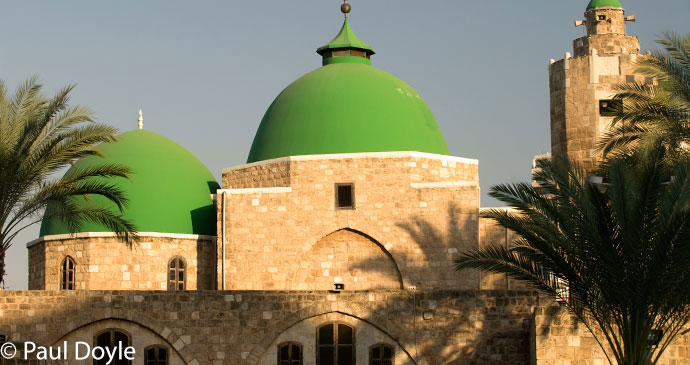
Tripoli
With a population of around 250,000, Tripoli – a heartland of the Sunni Muslim community – is Lebanon’s second-largest city and port, and capital of the North Lebanon Governorate (Muhafazat). Despite its size, it has been estimated that only some 2% of visitors to the country actually visit Tripoli and those who do mostly arrive on organised coach tours as day-trippers rather than on an extended tour of the city and its environs. Yet Tripoli, 85km north of Beirut, contains after Cairo the largest and most significant set of Mamluk-period architecture in the world, with other vestiges of its past highlighted by the old-fashioned souks, as redolent of 1,001 Arabian Nights as you will experience anywhere north of Sidon. Here you can still see artisans, from jewellers to tailors, toiling over their labours in factories and workshops used by their forebears over the past five centuries.
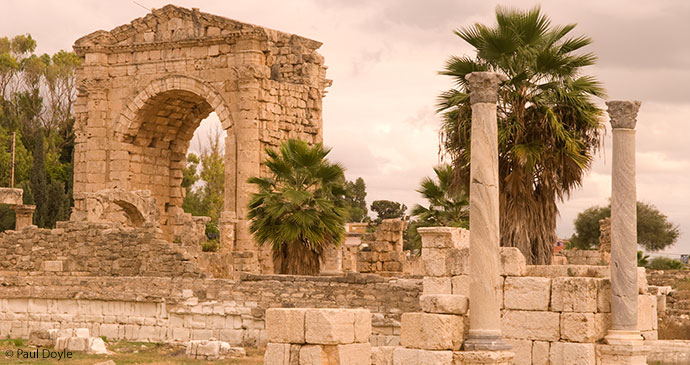
Tyre
Once dubbed the ‘Queen of the Seas’ for its mercantile and seafaring activities, Tyre was previously a flourishing commercial centre for international trade and appears in the classical writings of Herodotus and Homer. Some 80km from Beirut, and a little over 40km from Sidon, Tyre today evokes a battered and slightly melancholic feel with very few traces left of its once illustrious past. As an overwhelmingly Shi’ite town, Tyre wears its heart on its sleeve, with effigies of the resistance movement and shops selling Hezbollah souvenirs and photos of its leader, Hassan Nasrallah, ubiquitous.
Although economically less developed and visited than other areas of the country, Tyre’s wealth for the visitor today lies in its still traditional and functioning fishing port, its lively and engaging souk area and its 1984 UNESCO-designated World Heritage site of Roman-era architecture. During the summer months, an international arts and music festival is held within the environs of these Roman ruins.
Beirut
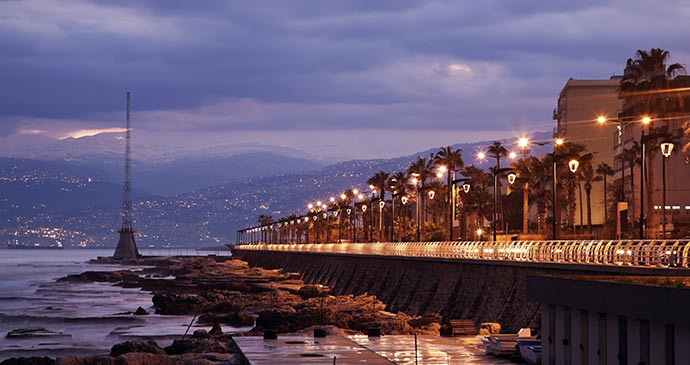
Framed by the blue waters of the Mediterranean Sea and the often snowy peaks of Mount Sannine, Lebanon’s capital and most populous city, Beirut – ‘Bride of the East’ to the ancient Phoenicians – commands a proud and enduring presence at the midway point on the Lebanese coastline. This much-vilified city of over two million people boasts more than 5,000 years of recorded history. However, it is only the last few decades with which most foreigners are acquainted as sectarian divisions and foreign interference thrust Beirut and Lebanon onto the international stage with the start of the country’s 15-year civil war. Lebanon’s descent into anarchy soon made the country a byword for man’s inhumanity and the very notion of Beirut and tourism became one of the modern era’s best-known oxymorons.
The epicentre of reconstruction is Downtown, which now boasts beautifully restored Ottoman- and French-era architecture, souks and an abundance of five-star hotels complemented by a chic café culture and modern restaurants. On bustling Rue Hamra, once known as Beirut’s Champs Elysées, coffee, conversation and shopping take precedence, while further east the neighbourhood of Bourj Hammoud is an example of an integrated diaspora, a displaced Armenian people who have made Beirut their home whilst preserving their own cultural identity.
In upmarket Verdun, Beirut bling competes with international designer fashion labels. The southern suburbs of the city, however, provide a poignant reminder of a city still wearing its past on its sleeve. Here, thousands of Palestinian and Shi’ite Muslim refugees live in abject poverty; posters of martyrs killed fighting Israel in the south of the country line the streets together with effigies of Iran’s Ayatollah Khomeini, providing the most visible reminders that, for all its renaissance, Beirut remains embroiled in the wider Middle East peace process.
Related books
For more information, see our guide to Lebanon:
Related articles
Did you know that Lebanon is one of the most ancient wine producers in the world?
Are you up for the challenge?
From crumbling Persian empires to colossal Roman cities, here are some of our favourite ruined civilisations from around the world.
Explore the ‘Pearl of the Middle East.’
We’ve all heard of Burgundy and Tuscany, but what about Kosovo and Israel?
